So how many browser tabs do you have open right now?
Quick! Do an audit on your internet browser. How many can you count? Are there 1 or 2 open? Maybe 5 or 6? Or is it more like 10? Alternatively, how many programs and windows have you got open on your computer screen right now? I’d bet that there’s more than one 🙂
A few months ago it felt like my wheels were churning. I was doing all sorts of things in various aspects of my life and business, but I didn’t feel like I was getting any traction or making significant progress. I was feeling scattered, unfocused and foggy.
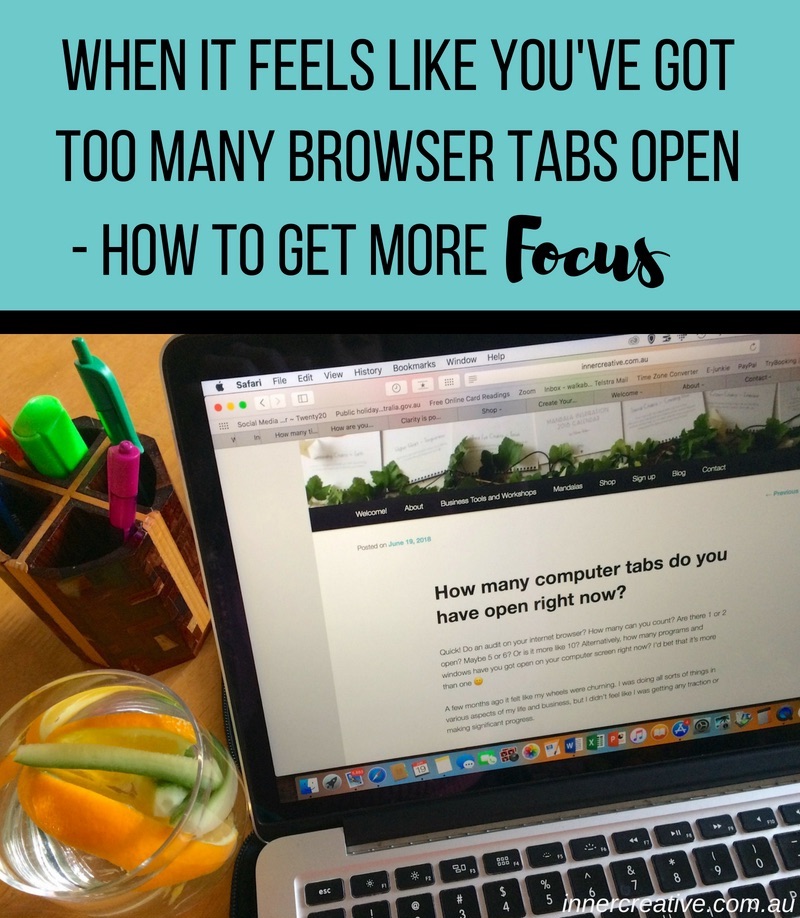
It finally hit me when I went to open something in my internet browser and it took me onto a whole new window. I had maxed out the number of tabs that I could have open at the same time. And when I reflected on it, this was a metaphor for how I was living my life. I had way too many tabs open than I could deal with. And all I was doing was adding more and more on to my plate.
So with a curious spirit, I decided to do a quick audit of what I had open in those tabs. Many of the tabs were related to webinars or videos that I wanted to watch (but hadn’t yet), part-completed applications or information portals, and then webpages with recommended information, leads and things that I wanted to follow up on.
It was part FOMO (Fear Of Missing Out), part wishful thinking, as well as an active ‘to do’ list all mixed in together. The micro of my internet browser was reflective of my macro life experience.
So what to do next?
First, I decided to tackle the ‘micro’ chaos in my internet browser. I aimed to close as many as I could right away. I opened each tab to critically examine:
-Did I really need this information any more?
In some cases, the open webpage information was no longer relevant, had been superseded, or I had dealt with the issue. These were easy tabs to close.
-Did I realistically have the time or burning desire to deal with it right now?
I reflected that in an ideal world it would be great to make more improvements or learn all of these new tips, but it wasn’t super critical right now. I closed these types of tabs, having to trust that when I did need to know about this topic I would be able to find this or better information. Similarly, if I dropped an idea that wasn’t burning for me right now, then I believed it would reignite later down the track or a better idea would pop into its place.
There is an option to bookmark this someday category for future reference. I decided to delete these tabs without bookmarking them, because I didn’t want to delude myself and add to the already bursting list of bookmarks that I’d relegated to the someday pile. This category also made me question whether I truly wanted to know about something, or whether I had the tab open because I thought I ‘should’ know or do this. This ‘should’ could have come via the recommendations or expectations of others, or from my own internal, unrealistic expectations – ie. If I was the perfect ‘x’, then I would know about ‘y’ or do ‘z’. These tabs were a little harder to close because I had to let go of this idealised version of myself and accept who I really am right now and what my values and priorities are.
Once I’d downsized my open internet browser tabs to the essential, I opened up these questions to the bigger macro version of my life.
How do I deal with all of the unfinished ‘open’ projects or commitments in my business or life? How do I reduce my scatter brain feeling?
I decided to tackle the business part of my life first.
Step 1 – Capture – Put everything on the table
The first step was to get everything that was swirling inside my head on to paper. Part of the overwhelm and ‘scatteredness’ I was feeling was related to having a lot of projects or ideas swirling in my head (the ‘too much’ feeling), as well as having a feeling that I was missing or overlooking something (the fear that I’d dropped a ball somewhere).
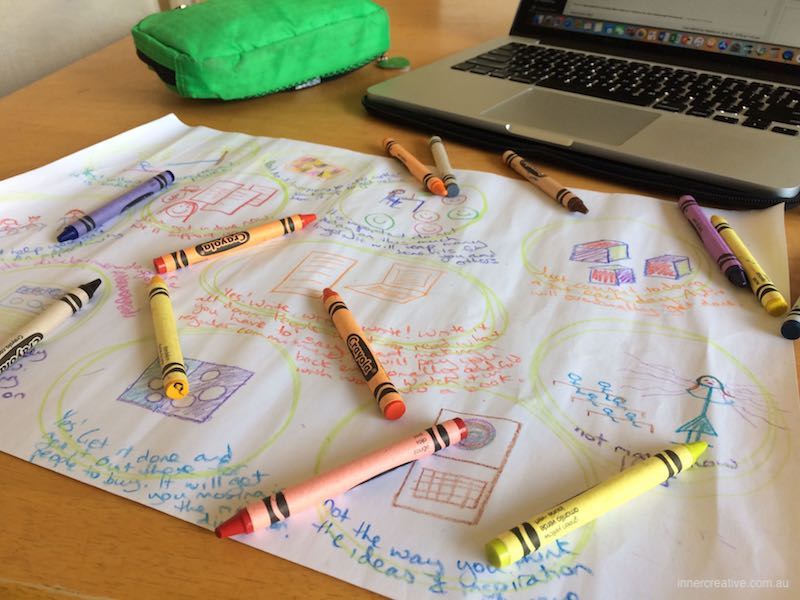
I sat down with a piece of blank A3 paper and drew a picture of every single business idea or project that I had on my mind. I clustered like actions into a ‘project’ to stop this from becoming a massive ‘to do’ list (e.g. the ‘Complete my tax return’ project included all of the actions relating to reconciling and organising my accounts, collating the relevant information, and then sending the information to my accountant). Interestingly I thought that I had about 6 projects on the go in my head. By the end of the downloading process, I had 11 (no wonder I was feeling overwhelmed).
If the idea of drawing feels too hard, then just capture them in whatever form makes sense to you, e.g. write them down in a list. The main goal is to get them out of your head and onto something concrete you can see.
Step 2 – Sort – Examine and purge where possible
One by one I examined each project or idea and asked:
- Is this project important to me anymore?
- Do I care? Is it relevant to my goals and the direction I want to take my business/work?
- Did I have the time to realistically work on it right now? Can it wait?
- What would I like to do with this project next?
As I looked at each project, I was able to tap into my inner guidance (the advantage of going non-verbal with drawings meant that it was easier to tap into that expansive thinking part of my brain). I examined my feelings to see which projects I was excited about, and what I wanted to let go. I was able to work out relative priorities and timing (ie. what had to be done now or soon, and what could wait for later).
Step 3 – Commit – Decide on a focus for completion
I now had my priorities and an idea of the size and type of each project (e.g. a short-term task that needed doing now, a long-term project that could be chunked into 15 minutes of action per day, a big project that involved others’ input with ebbs and flows of activity.)
To make sure that I didn’t get back into that chaotic ‘multi-tab’ headspace I decided to focus my headspace on only one big project at a time. I couldn’t split myself any longer. I had to commit.
It’s difficult to work on only one thing at a time. I know I thrive on diversity and variety. Multiple projects starve off boredom and can also feed inspiration into each other. But too many projects at the same time leads to this feeling of overwhelm. I did not want to feel like this anymore. I decided to only pick one major project to focus on until it was done.
In my case, I chose to focus all of my attention on finishing my weekly planners and getting them out into the world (see a sneak peek below). This wasn’t easy because it meant that I had to let go of creating a 2019 Mandala Inspiration calendar. The ‘people pleaser’ in me found this hard, especially when people would enthusiastically ask about next year’s calendar release. But to make the calendar project work, I would have throw myself into drawing, design and production straight away. I didn’t have the enthusiasm or drive at the time. I had to trust another mandala project would take its place at a better time. Also, the weekly planner ‘tab’ had been open for a little while now and I just wanted to see it finished.
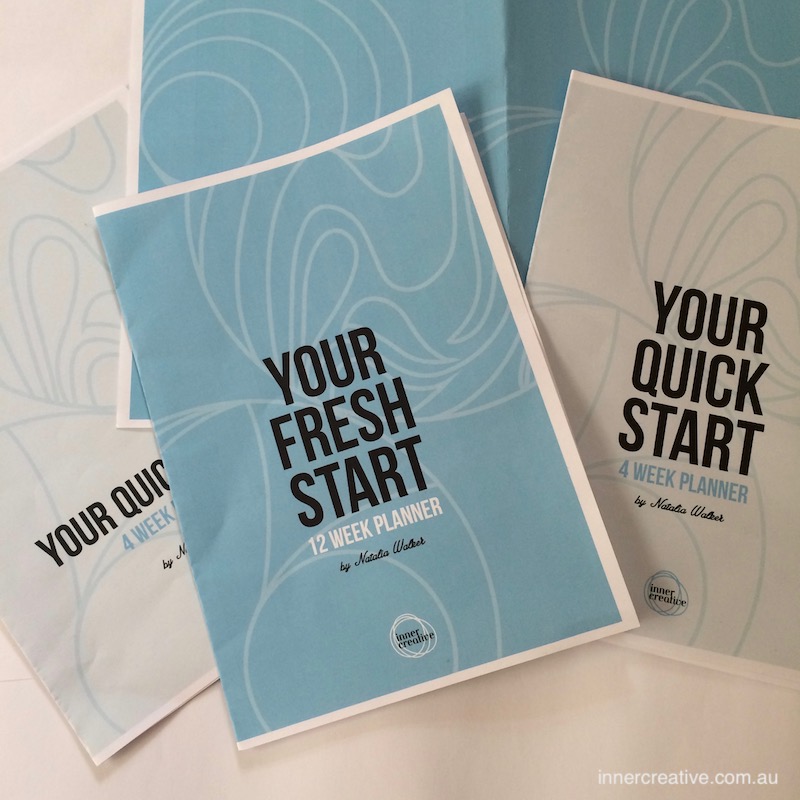
Now that I’d committed to only working only on one major project it didn’t mean that it took up all of my working time. There were still small short-term or regular projects that I needed to action, but they weren’t my first priority. I made sure that I worked on my major project first thing in the day, and allocated time to these smaller activities when I was waiting on others’ inputs or when my energy or inspiration was flagging.
So now…
I’ll never know without some sliding doors, whether focusing on one major project at a time has meant that I become more prolific or successful over the longer term. But I do know that my headspace has become a lot more calmer and focused because of it. Having a self-imposed limit also made it easier to make decisions and say ‘no’ to other people’s suggestions about what else I could do. I realised that I couldn’t be ‘all things to all people’ and do everything without short-changing myself.
I have resigned myself to the slow and steady approach to working and life. And while it doesn’t mean everything’s perfect, at least it feels a little more manageable and less chaotic. It’s easier to focus on the road ahead when there’s only a few tabs open.
Where could you benefit from closing down some ‘tabs’ in your life, work or business? What would you like to focus in on until its completed?
Curious to learn more about Your Fresh Start planner? Read more about it here.
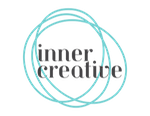

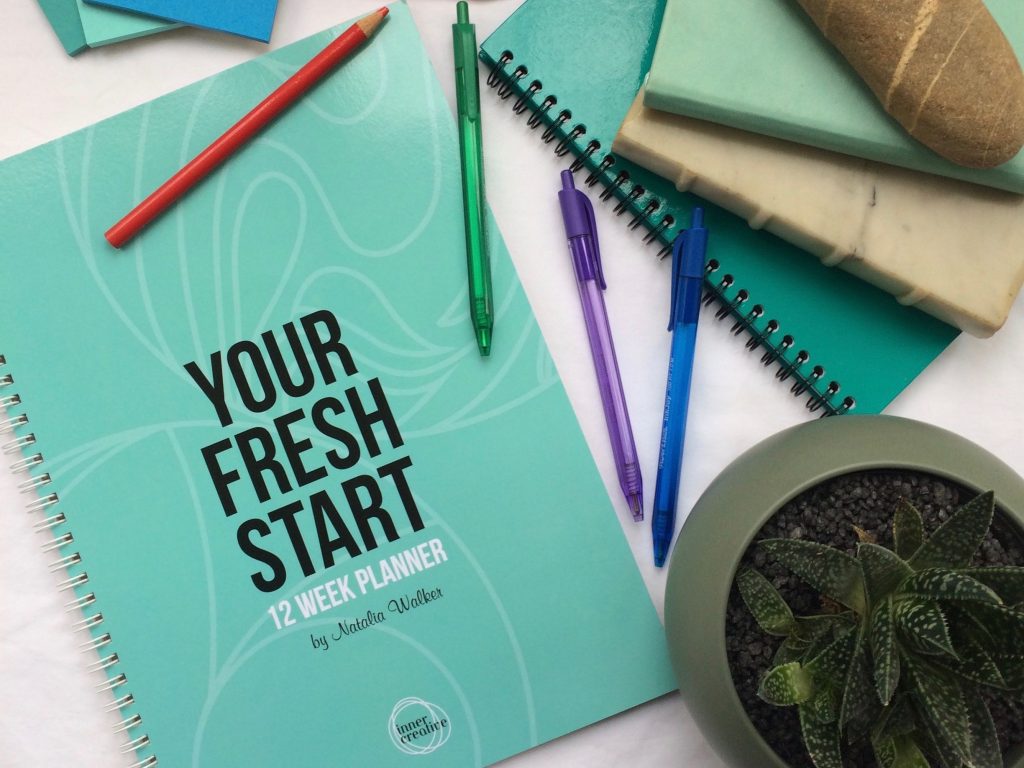

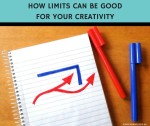



Love these steps Natalia. I’m going to give this a go to work out which ‘tabs’ I need to be closing down.
And looking forward to the 12 week planner. Can’t wait to get started on that.
Thanks for this post. Nice one. Very helpful.
Thanks Tara. So glad that you found this post useful. May it help you create more focus and space in your life and work. And thanks for your enthusiasm about the 12 week planner. I’m excited too 🙂 Keep your eye out to see how you can get your own copy very soon.